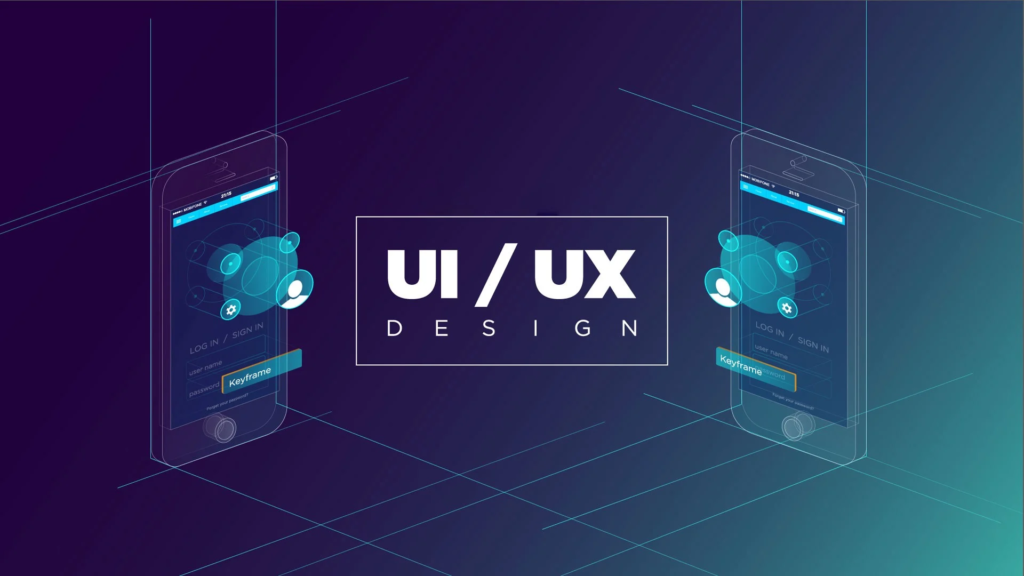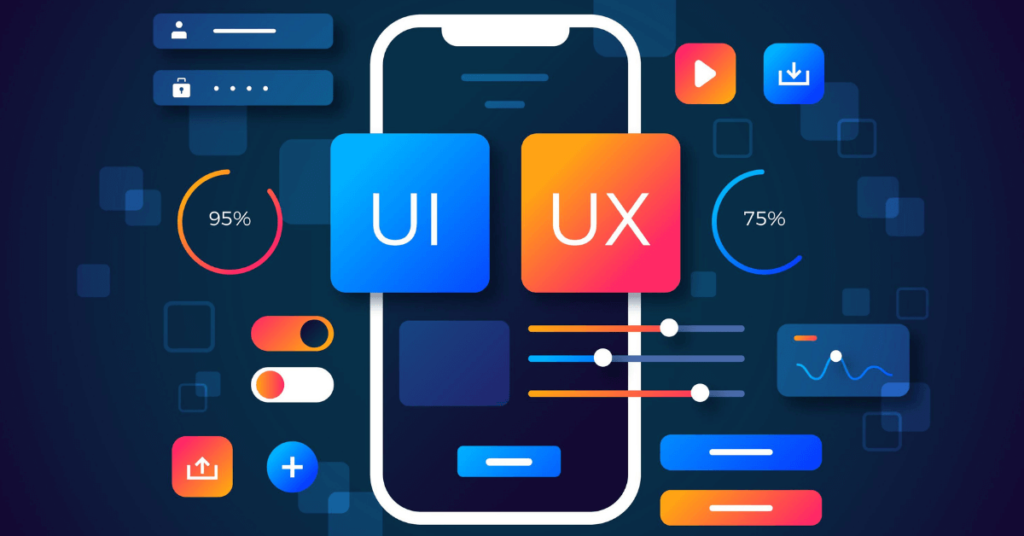In today’s digital world, design is everything. From mobile apps to websites to software platforms, people interact with digital products and services on a daily basis, making UI/UX design more critical than ever before. UI/UX design refers to the process of designing digital interfaces and experiences that are both visually appealing and easy to use. A well-designed user interface (UI) can make or break a digital product, as users often judge the quality of a product based on its visual design. Similarly, a well-designed user experience (UX) can make the difference between a product that users love and one that they abandon after just a few minutes of use.
UI/UX design is essential because it directly impacts how users engage with digital products and services. A good UI/UX design can increase user engagement and satisfaction, leading to higher conversion rates and sales. It can also help to differentiate a brand from its competitors and increase customer loyalty. On the other hand, a poorly designed interface or experience can lead to frustration, confusion, and disengagement, ultimately driving users away from a product or service. In today’s highly competitive digital landscape, it is more important than ever to prioritize UI/UX design. Companies that invest in design and put the user at the center of their design process are more likely to succeed in creating digital products and services that people love to use. In this blog, we will explore the importance of UI/UX design in more detail, discussing the difference between UI and UX design, the elements of effective UI/UX design, the benefits of good design, and the future of UI/UX design. We will also provide tips on how to create effective UI/UX design and highlight common design mistakes to avoid. By the end of this blog, you will have a better understanding of the importance of UI/UX design and how it can help your digital products and services succeed in today’s competitive landscape.
The Importance Od UI/UX Design

UI/UX design is essential for creating digital products and services that are easy to use, visually appealing, and engaging for users. Here are some reasons why UI/UX design is so important:
Good UI Design Creates User-Friendly Interfaces
A well-designed user interface can make all the difference in how users engage with a digital product. UI design focuses on the look and feel of a digital product, including its visual design, typography, color scheme, and layout. A good UI design makes it easy for users to find what they’re looking for, understand how to use the product, and navigate through the interface. This, in turn, leads to higher user satisfaction, engagement, and retention.
Good UX Design Creates Seamless User Experiences
UX design focuses on the overall user experience of a digital product, including how users interact with it, how easy it is to use, and how it meets their needs. A good UX design ensures that users can accomplish their goals efficiently and effectively. This involves understanding user needs, behaviors, and motivations, and designing the product accordingly. A good UX design creates a seamless user experience, removing barriers to use and increasing engagement.
Good Design Increases User Satisfaction And Engagement
When users encounter a well-designed product, they are more likely to be satisfied with their experience and engage with the product for longer. This can lead to higher conversion rates, as users are more likely to purchase a product or service that they enjoy using.
Good Design Differentiates Brands From Competitors
In a crowded digital landscape, it is important for brands to stand out from their competitors. Good design can help differentiate a brand by creating a unique and memorable experience for users. This can lead to increased brand recognition, loyalty, and customer retention.
How To Create Effective UI/UX Design

Creating effective UI/UX design requires a deep understanding of user needs, behavior, and motivations. Here are some tips for creating effective UI/UX design:
Conduct User Research
To create effective UI/UX design, it is important to understand the needs and motivations of the target audience. This can be achieved through user research, which involves gathering data about users, including their goals, behaviors, and pain points. User research can be conducted through surveys, interviews, and observation. The data gathered through user research can then be used to inform the design process.
Define User Personas
User personas are fictional representations of the target audience that help designers better understand the needs and behaviors of their users. Persona development involves creating a detailed description of the target user, including their demographics, behaviors, goals, and pain points. User personas help designers make informed decisions about the design of the product, ensuring that it meets the needs of the target audience.
Focus On Usability
Usability is key to creating effective UI/UX design. A usable product is one that is easy to learn, easy to use, and meets the needs of the user. To ensure usability, designers should focus on creating a clear and intuitive interface, with well-defined navigation and information architecture. They should also ensure that the product is consistent in its design and layout, with clear and concise language and messaging.
Incorporate Visual Design
Visual design is an essential element of UI/UX design. Visual design refers to the overall look and feel of the product, including its color scheme, typography, and layout. Visual design should be consistent with the brand identity and messaging, while also being visually appealing and engaging for users. Designers should ensure that the visual design supports the usability of the product, rather than detracting from it.
Test And Iterate
UI/UX design is an iterative process that involves testing and refining the product based on user feedback. Designers should conduct usability testing throughout the design process, to ensure that the product meets the needs of the target audience. Based on user feedback, designers can make changes to the design and test it again, until they arrive at a product that is both usable and visually appealing.
Common UI/UX Design Mistakes To Avoid

Even the most experienced UI/UX designers can make mistakes that can negatively impact the user experience. Here are some common UI/UX design mistakes to avoid:
Ignoring The User’s Needs
UI/UX design is all about meeting the needs of the user. If designers fail to take into account the needs and behavior of the user, they can end up creating a product that is difficult to use and fails to meet the user’s goals. To avoid this mistake, designers should conduct user research and create user personas, which can help them better understand the needs and behavior of the target audience.
Cluttered And Confusing Interface
A cluttered and confusing interface can be overwhelming for users and make it difficult for them to find what they’re looking for. To avoid this mistake, designers should focus on creating a clear and intuitive interface, with well-defined navigation and information architecture. They should also ensure that the product is consistent in its design and layout, with clear and concise language and messaging.
Poor Visual Design
Visual design is an essential element of UI/UX design. A poorly designed visual interface can make the product appear unprofessional and untrustworthy. To avoid this mistake, designers should focus on creating a consistent and visually appealing interface that is consistent with the brand identity and messaging.
Inconsistency In Design
Inconsistent design can confuse users and make it difficult for them to use the product. To avoid this mistake, designers should ensure that the product is consistent in its design and layout, with clear and concise language and messaging.
Lack Of Usability Testing
Usability testing is a critical element of UI/UX design. Without proper testing, designers may not be aware of the issues that users are experiencing with the product. To avoid this mistake, designers should conduct usability testing throughout the design process, to ensure that the product meets the needs of the target audience. Based on user feedback, designers can make changes to the design and test it again, until they arrive at a product that is both usable and visually appealing.
The Future Of UI/UX Design
UI/UX design is constantly evolving, and there are many exciting developments on the horizon. Here are some of the trends that are shaping the future of UI/UX design:
Voice Interfaces
As voice recognition technology becomes more advanced, designers will need to create interfaces that are optimized for voice commands. This will require a shift away from visual interfaces and a focus on creating conversational experiences that are intuitive and natural.
Artificial Intelligence
Artificial intelligence (AI) is already being used to improve the user experience, through chatbots and other forms of automation. In the future, AI will be used to personalize the user experience, by analyzing user behavior and preferences, and making recommendations based on that data.
Virtual And Augmented Reality
Virtual and augmented reality (VR/AR) are already being used in gaming and entertainment, but they also have enormous potential in other industries. In the future, designers will need to create UI/UX experiences that are optimized for VR/AR, taking into account the unique challenges of these immersive environments.
Minimalism And Simplicity
As users become more accustomed to digital products, they are also becoming more discerning about the products they use. In the future, UI/UX designers will need to focus on creating products that are simple and easy to use, with a minimalist design that eliminates clutter and distractions.
Accessibility
Accessibility is already a key consideration in UI/UX design, but it will become even more important in the future. Designers will need to create products that are accessible to users with a wide range of abilities, including those with disabilities.
Conclusion
In today’s digital age, UI/UX design is more important than ever. With so many digital products and services available, users have come to expect a high level of quality and usability. Effective UI/UX design is the key to creating digital products and services that meet the needs of users and stand out in a crowded marketplace. In this blog, we’ve explored the importance of UI/UX design, and looked at some common mistakes to avoid. We’ve also considered some of the trends that are shaping the future of UI/UX design, from voice interfaces and artificial intelligence to virtual and augmented reality and accessibility.
UI/UX design is a complex and ever-evolving field, and there is always more to learn. By staying up-to-date with the latest trends and best practices, designers can create products and services that are both visually appealing and user-friendly. With effective UI/UX design, businesses can improve user satisfaction, increase customer retention, and ultimately achieve their goals.







